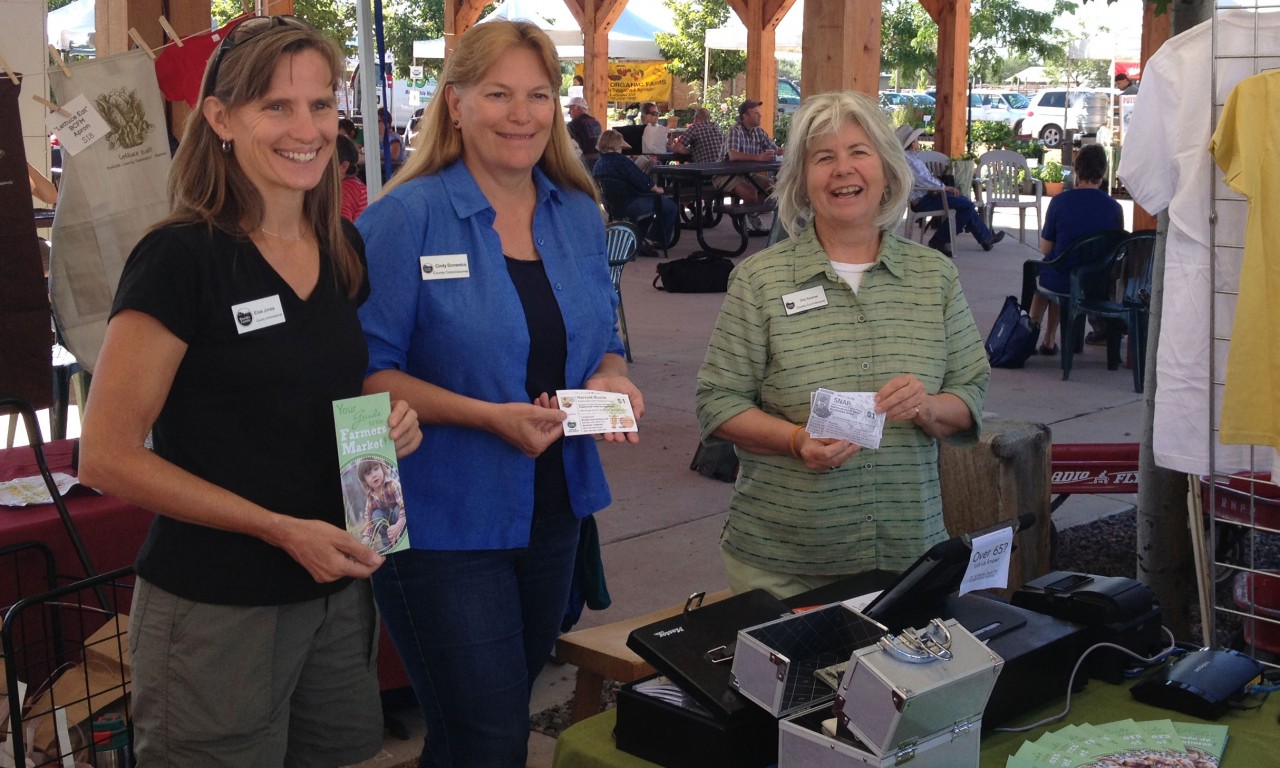Any good farmer knows that in order for seeds to successfully take root and thrive, a number of factors must be present: good soils, consistent water, and the right growing temperatures. Similarly, some good ideas only come into fruition when surrounded by an inspirational mixture of passionate leaders, good funding, proper timing, and luck. Such was the case with the implementation of the Double SNAP, or Harvest Bucks, program at the Boulder County Farmers’ Market (BCFM) last year.
The seed for this idea was first planted when a number of Boulder County and City of Boulder representatives attended a conference in Santa Fe, New Mexico in 2014. Conference participants had the opportunity to visit that city’s thriving farmers’ market, where they met with the market manager to better understand how the Double SNAP program was implemented there. By the end of the conference, Boulder County Parks & Open Space and the City of Boulder had committed $10,000 each, while Boulder County Public Health and BCFM had committed personnel, to pilot a program at all of the BCFM markets in Boulder and Longmont beginning in August, 2014.
During the pilot period, the Harvest Bucks Program provided customers enrolled in the Supplemental Nutrition Assistance Program (or SNAP, formerly known as the Food Stamp Program) with an incentive to purchase locally grown fresh fruits and vegetables from area growers. The program provided a doubling of benefits up to $20 per SNAP customer per market visit. Participants in the Women, Infants and Children (WIC) program also received Harvest Bucks to spend at BCFM markets.
Benefiting Farmers and Customers
Along with increasing the purchasing power of underserved residents at the markets, the Harvest Bucks program aims to remove barriers that might otherwise keep participants in federal nutrition assistance programs from attending the farmer’s markets. Similar programs throughout the country have shown that once SNAP participants feel more comfortable at the farmers’ markets and more familiar with using seasonal produce, they tend to become repeat customers. The program also increases the financial viability of small acreage fruit and vegetable vendors by diversifying their customer base.
For Boulder County Parks & Open Space, the opportunity to further help area farmers made supporting the program an easy decision. However, beyond that goal, there was an even bigger reason for providing initial funding.
David Bell, Agricultural Resources Division Manager, explains, “Everyone who lives, works or visits Boulder County pays into the sales tax that supports and maintains our extensive open space program. We felt it was important that all people, regardless of income, also have a chance to enjoy the bounty of those lands.”
Numbers Prove Positive
Results from the pilot program were extremely positive. SNAP and Harvest Bucks redemption at the Boulder-based farmers’ markets were 225 percent higher than SNAP sales the year prior, while SNAP and Harvest Bucks redemptions at the Longmont-based farmers’ markets increased by 506 percent. Furthermore, surveys showed that 88 percent of participants increased their consumption of fruits and vegetables, 94 percent agreed that is was easier to purchase fresh fruits and vegetables, and more than 80 percent said that they would not have come to the farmers’ market without the incentives.
Funding the Future
While the Harvest Bucks program did not receive a large grant from the United States Department of Agriculture that would have provided funding for the next four years, additional funding has been secured for the 2015 season. The City of Boulder has committed $15,000 towards the project, while the Boulder County Department of Housing and Human Services is providing $30,000 for this year. This increase in funding means that the program will hopefully last the entire farmers’ market season. It also has prompted program coordinators to increase the Harvest Bucks match to $40 per SNAP customer per market visit. While the Harvest Bucks program grows and flourishes at the market, organizers are hoping to find more secure sources of both public and private funding that will ensure its success for many years to come.


